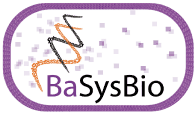
University of York (UoY)
 |
Location : York / UK |
| Leader : N/A | |
| Website : www.york.ac.uk |
- Short description of the institution:
The University of York is one of the top-ranking Universities in the UK both in the quality of its teaching and research. It was founded in 1963 with 200 students, since when, it has expanded to 10,000 students and over 30 academic departments and research centres. The main campus is a 200-acre landscaped park, well known for its lake and wildfowl. The colleges and academic buildings are in close proximity to the historic city of York.- Description of the different units involved in the project/ Competences of the team in the project:
The York Structural Biology Laboratory (YSBL) is part of the Department of Chemistry and is located in a recently constructed Biosciences Building shared with the Department of Biology. YSBL is a grouping of 70 or so researchers whose shared expertise spans all aspects of protein structure determination using X-ray crystallography. This includes gene cloning and expression, protein purification, characterisation and crystallisation, X-ray analysis and phasing, molecular graphics and modelling and computational approaches to drug discovery. The laboratory has recently built up expertise in high throughput methodologies through its participation in the EU-funded ‘Structural Proteomics in Europe' (SPINE) project, which resulted in structures of many proteins from Bacillus anthracis . The laboratory has been a long-time node in CCP4, which provides and maintains a comprehensive collection of software for protein crystallography used worldwide. Currently the laboratory is also participating in the development of Laboratory Information Management Systems in a consortium centred on the European Bioinformatics Institute. The SBL sits alongside a Technology Facility which provides access to Laboratories with expertise in Protein Production, Imaging, Molecular Interactions, Genomics, Proteomics, and Bioinformatics. Much of the BaSysBio work at York will benefit from the recent investment in establishing a High Throughput Expression Laboratory (HiTEL) that has facilities for the parallel cloning of DNA fragments and the expression and purification of proteins.
- Key persons involved in BaSysBio:
Pr. Anthony J. Wilkinson
Pr Wilkinson trained in enzymology and moved via molecular biology into protein crystallography. He has had a long interest in the specificity of protein-ligand interactions. He has been working on proteins from Bacillus involved in transcriptional regulation and spore formation for 12 years and his group determined the first structures of a LysR-type transcriptional regulator and a two-component system response regulator in its phosphorylated form.
Dr. Mark J. Fogg is a post-doctoral research fellow who for his PhD studies worked on the enzymology of archaeal DNA replication and repair. Recently he has been an integral part of the EC-funded SPINE project carrying out target selection, high-throughput expression, purification and structural analysis of proteins from Bacillus anthracis and directing/advising on the activities of co-workers. He will be closely involved in the development of vectors and the production of constructs for the work described in WP1.1. He will also participate actively in the structural studies.
Dr Jared Cartwright studied adenosine polyphosphate hydrolases during his PhD before taking up a position as Protein Production Laboratory manager in the Technology Facility in the Biosciences Building at York. He has established state-of-the-art facilities for high throughput parallel production and cloning of DNA fragments and for the purification of recombinant proteins. These will be integral to the activities described in WP1.1.
Pr. Keith S. Wilson
Pr Wilson is an experienced protein structural biologist who was head of the EMBL Hamburg outstation for 9 years and who now leads the CCP4 team at York. He also led work the SPINE project at York is now leading SPINE2 which concerns eukaryotic protein complexes.
Show all the institutions